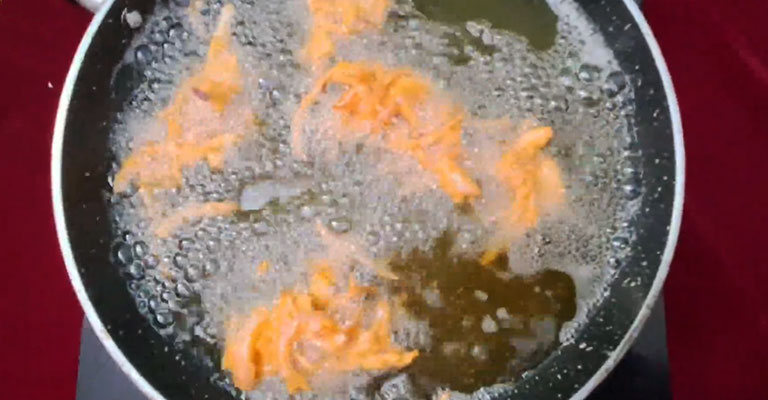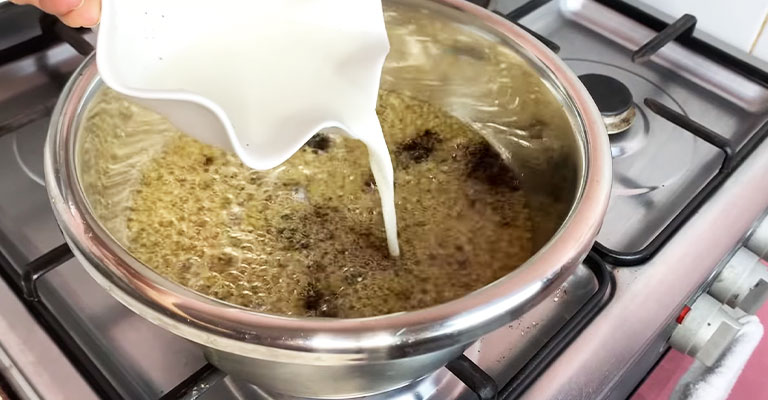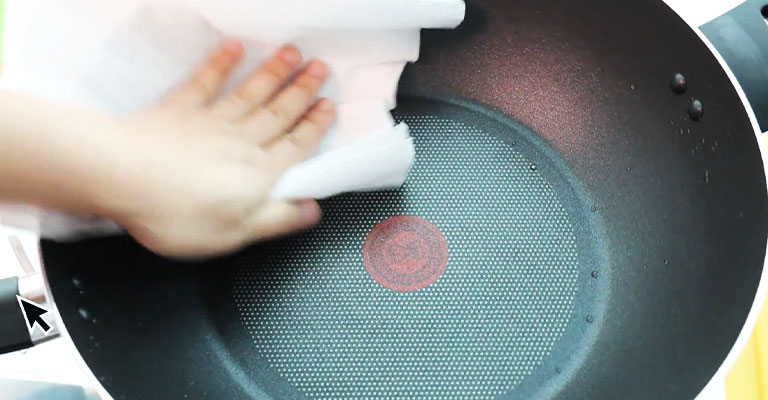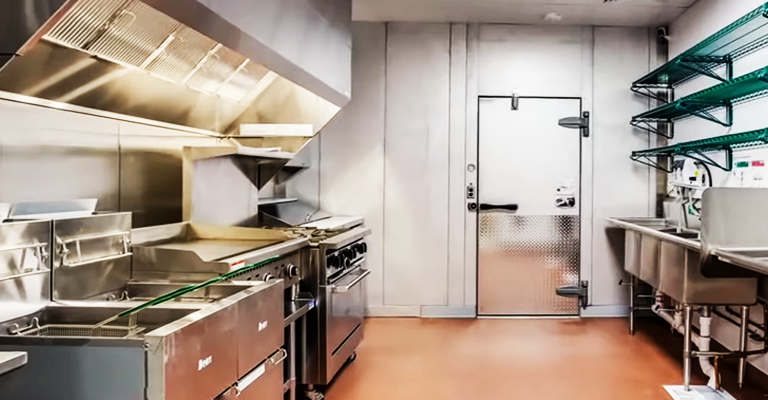Why Does Cooking Oil Foam Up?-All You Should Know
Cooking oil foaming is a familiar yet puzzling occurrence in the culinary world. When oil reaches a certain temperature, it often erupts into a frothy frenzy, creating a visual spectacle that can leave even seasoned chefs scratching their heads.
This phenomenon is not merely a quirky kitchen quirk; it’s grounded in fundamental scientific principles.
Understanding why cooking oil foams up requires delving into the intricate interplay of heat, moisture, and the molecular properties of different oils.
This knowledge not only demystifies the process but also empowers cooks to take precise measures in the kitchen, ensuring that they can harness the power of oil without encountering unwanted foaming surprises.

Why Does Cooking Oil Foam Up?
Cooking oil can foam up for several reasons, and understanding these factors can help prevent accidents and ensure a safe cooking experience.
Here are some of the primary reasons why cooking oil may foam:
Water Content
One of the most common reasons for oil foaming is the presence of water or moisture in the food you’re cooking. When water comes into contact with hot oil, it rapidly evaporates, creating steam.
The steam bubbles then rise to the surface, causing the oil to foam and splatter. To avoid this, make sure that the food you’re frying is dry before it comes into contact with the hot oil.
High Heat
When oil is heated to a high temperature, it tends to expand and produce more bubbles and foam. This is especially true for oils with a lower smoke point, such as butter or some vegetable oils.
It’s essential to monitor the oil’s temperature and avoid overheating it, which can lead to excessive foaming.
Impurities
Impurities in the oil, such as leftover food particles or other contaminants, can also contribute to foaming.
These impurities can act as nucleation sites, where bubbles form and grow. Using clean and fresh oil can help reduce foaming.
Type of Oil
Different oils have varying tendencies to foam. For example, oils with higher saturated fat content, like coconut oil or lard, tend to foam less than oils with higher unsaturated fat content, like vegetable or olive oil. This is due to the differences in their molecular structures.
Airborne Moisture
Sometimes, moisture from the environment, such as high humidity in the kitchen, can contribute to oil foaming.
It’s important to minimize the exposure of oil to moisture in the air to prevent excessive foaming.
Food Being Fried
The type of food being fried can also impact foaming. Foods with high water content, like certain vegetables or battered items, can release moisture into the oil, leading to foaming.
Again, ensuring that the food is dry before frying can help mitigate this issue.
Overcrowding
Frying too much food at once can lead to overcrowding in the fryer or pan.
This can cause the oil to foam and bubble more as the food releases moisture and traps it in the hot oil. Fry in smaller batches to prevent overcrowding.
The Science Behind Cooking Oil Foaming

The science behind cooking oil foaming is rooted in the interplay of several physical and chemical processes.
To understand why cooking oil foams, it’s important to consider the key scientific factors involved:
Water and Moisture Content
Water is one of the main factors leading to foaming in cooking oil. When water comes into contact with hot oil, it undergoes a phase change from liquid to vapor (steam).
This phase change causes the water to rapidly expand, creating bubbles. These steam bubbles rise to the surface of the oil, which, in turn, leads to foaming.
Temperature and Vaporization
As the oil is heated, its temperature increases. The increase in temperature not only decreases the oil’s viscosity but also promotes the vaporization of any water present in the food or the cooking environment.
When water vaporizes, it forms gas bubbles, which are less dense than the surrounding oil, causing them to rise to the surface and create foam.
Leidenfrost Effect
When a liquid with a significantly higher boiling point encounters a liquid with a lower boiling point, a phenomenon called the Leidenfrost effect occurs.
This effect forms a vapor layer between the two liquids, preventing direct contact. In the case of cooking, if water is present within the food or the cooking environment.
Impurities and Nucleation Sites
Impurities, such as small food particles or air bubbles, present in the oil can act as nucleation sites. Nucleation sites are locations where bubbles can form and grow.
As steam is produced, it can collect around these impurities and form bubbles, causing the oil to foam. This is why using clean, filtered oil is essential to minimize foaming.
Type of Oil
The chemical composition of the oil also plays a role in foaming. Oils with a higher proportion of unsaturated fats, like vegetable or olive oil, are more prone to foaming than oils with higher saturated fat content, such as coconut oil.
Unsaturated fats are less stable at high temperatures and are more likely to undergo chemical reactions that generate foam.
Consequences of Cooking Oil Foaming

Cooking oil foaming can have several consequences, ranging from minor inconveniences to potentially dangerous situations.
Here are some of the consequences of cooking oil foaming:
Mess and Cleanup
When cooking oil foams, it tends to splatter and create a mess around the cooking area. This can include the stovetop, countertops, and even surrounding surfaces.
Cleaning up this mess can be time-consuming and may require additional effort to remove grease stains.
Burns and Injuries
Foaming oil can lead to splattering, which can cause burns if it comes into contact with the skin.
Hot oil burns can be particularly painful and may require immediate medical attention. In severe cases, they can lead to scarring or long-term damage.
Fire Hazard
When the foaming becomes excessive or if the oil overheats, it can potentially lead to a fire.
The combination of high heat and splattering oil can be highly flammable, and if not promptly addressed, it can result in a dangerous kitchen fire.
Reduced Food Quality
Foaming oil can affect the quality of the food being cooked. Excessive foaming can result in uneven cooking as the bubbling action may prevent the food from being fully immersed in the hot oil.
Wasted Oil
Foaming oil can lead to increased evaporation, which means that you may end up using more oil than necessary for your cooking, leading to waste.
Altered Flavor
When oil foams excessively, it can alter the flavor of the food. The foam may trap small particles of burnt food, which can lead to an unpleasant taste.
Increased Risk of Oxidation
Foaming can introduce more air into the oil, potentially increasing its exposure to oxygen.
This can accelerate the process of oxidation, which can lead to the degradation of the oil’s quality and nutritional value.
Kitchen Safety Concerns
Cooking in a kitchen with excessive foaming can be hazardous. The presence of hot splattering oil can lead to accidents and injuries not only for the cook but also for anyone in the vicinity.
How to Prevent Cooking Oil Foaming?

Preventing cooking oil foaming involves a combination of good practices, proper equipment, and understanding the science behind it.
Here are several steps you can take to minimize or eliminate foaming when cooking with oil:
Use Dry Ingredients
Ensure that the food you’re cooking is as dry as possible. Excess moisture in the food can lead to steam production and foaming when it comes into contact with hot oil.
Choose the Right Oil
Different oils have varying smoke points, which is the temperature at which they start to break down and produce smoke.
Using an oil with a high smoke point, such as vegetable oil, can help prevent foaming at high temperatures.
Avoid Overcrowding
Do not overcrowd the cooking vessel.
Frying too much food at once can lead to excessive release of moisture, which contributes to foaming. Cook in smaller batches to maintain better control.
Maintain the Proper Temperature
Monitor the temperature of the oil closely. Overheating the oil can lead to more vigorous foaming.
Use a thermometer to ensure that the oil is at the right temperature for the cooking method.
Use a Deep Fryer
When possible, consider using a deep fryer with a built-in thermostat.
These devices are designed to regulate temperature and can help prevent overheating, which in turn reduces the likelihood of foaming.
Filter and Strain the Oil
Before reusing cooking oil, strain it through a fine-mesh sieve or cheesecloth to remove any food particles or impurities. This helps reduce the presence of nucleation sites that contribute to foaming.
Avoid Disturbing the Oil
Once the food is in the hot oil, avoid stirring it excessively. Agitating the oil can introduce more air and increase the likelihood of foaming.
Use a Lid with Caution
When you need to cover the cooking vessel with a lid, do so cautiously. When you remove the lid, be prepared for a release of steam and possible foaming. Lift the lid away from you to avoid getting burned.
Maintain a Clean Cooking Environment
Ensure that the cooking area is free from excess moisture, which can contribute to foaming.
Also, keep the stovetop and surrounding areas clean to prevent impurities from entering the oil.
Be Prepared for Emergencies
Have a fire extinguisher readily available in the kitchen. While it’s important to prevent foaming, it’s also crucial to be prepared to handle any emergencies that may arise.
Health and Safety Considerations
When working with cooking oil, there are important health and safety considerations to keep in mind to ensure a safe cooking environment.
Here are some key points to consider:
Proper Ventilation
Ensure that your kitchen has adequate ventilation to disperse any fumes or gases produced during cooking.
This helps prevent the accumulation of potentially harmful substances in the air.
Smoke Point
Different oils have different smoke points, which is the temperature at which they start to break down and produce smoke.
Avoid heating oils beyond their smoke points, as this can release harmful compounds and potentially lead to a fire hazard.
Avoid Overheating
Pay close attention to the temperature of the oil. Overheating can lead to oil splattering and foaming, which can be dangerous.
Use a thermometer to monitor the temperature and adjust the heat source as needed.
Use Appropriate Equipment: Use pots, pans, and deep fryers that are designed for the type of cooking you’re doing.
Make sure they are in good condition and not damaged, as damaged cookware can lead to accidents.
Dry Ingredients
Ensure that any food you are placing in hot oil is as dry as possible. Moisture in the food can lead to steam production, which can cause the oil to foam and splatter.
Avoid Crowding
Do not overcrowd the cooking vessel. Frying too much food at once can lead to excessive release of moisture and potential foaming. Cook in smaller batches to maintain better control.
Use Caution with Lids
When you need to cover the cooking vessel with a lid, be cautious.
When you remove the lid, be prepared for a release of steam and possible foaming. Lift the lid away from you to avoid getting burned.
Use a Splatter Guard
Consider using a splatter guard when frying or cooking with hot oil. This can help contain any splattering and prevent burns or fires.
Avoid Distractions
When working with hot oil, it’s crucial to stay focused and attentive. Avoid distractions and keep an eye on the cooking process to prevent accidents.
Have a Fire Safety Plan
Know how to respond in case of a kitchen fire. Keep a fire extinguisher rated for cooking oil fires readily available, and know how to use it. In the event of a fire, never use water to try to extinguish an oil fire.
Proper Storage and Disposal
Store cooking oils in a cool, dark place away from heat sources. When disposing of used oil, do not pour it down the sink or toilet, as it can clog pipes.
Instead, let it cool, then dispose of it in a sealed container or take it to a recycling center.
First Aid Kit
Keep a well-equipped first aid kit in your kitchen, including items like burn ointment, sterile bandages, and cool running water for immediate treatment of minor burns.
FAQs
What causes cooking oil to foam up?
Cooking oil foams up primarily due to the presence of water or moisture in the food or the cooking environment.
Can I prevent cooking oil from foaming?
Yes, you can prevent cooking oil from foaming by using dry ingredients, choosing the right oil with a high smoke point, and maintaining the proper temperature.
Is there a connection between oil type and foaming?
Yes, the type of oil used can affect the likelihood of foaming. Oils with a higher proportion of unsaturated fats are more prone to foaming than oils with higher saturated fat content.
Do impurities in cooking oil contribute to foaming?
Yes, impurities such as leftover food particles or contaminants in the oil can act as nucleation sites, where bubbles form and grow.
Can foaming oil be a safety hazard?
Yes, foaming oil can be a safety hazard. It can lead to oil splattering, burns, and, in severe cases, even kitchen fires.
To Recap
Cooking oil foaming is a common phenomenon rooted in the interplay of physical and chemical processes. The presence of moisture, either from the food being cooked or the environment, leads to the rapid production of steam, creating bubbles and causing foaming.
Factors such as oil type, temperature, and impurities also play pivotal roles. Understanding these dynamics is essential for safe and effective cooking.
By employing practices like using dry ingredients, selecting oils with high smoke points, and maintaining proper temperatures, one can significantly mitigate foaming.
This knowledge empowers cooks to create a safer and more efficient culinary experience, enhancing both the quality and safety of their meals.
